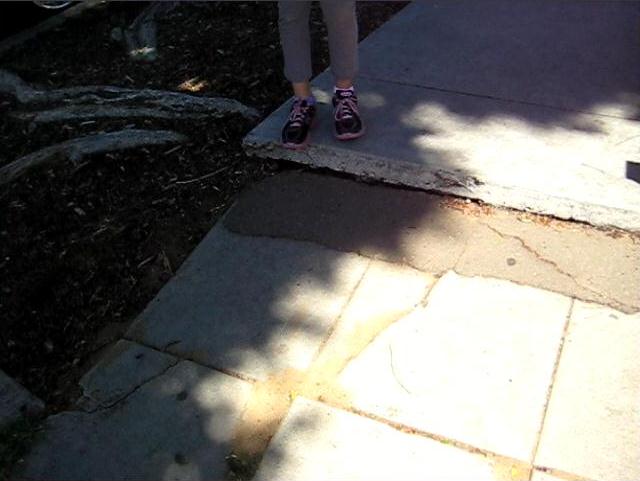
3400 block of Marlborough Avenue in the city of San Diego. | Photo Credit: Joe Austin, courtesy of The Stumblr.
By the middle of next month, the city of San Diego will unleash two dozen local college students onto its sidewalks.
They’re part of a $1 million study to document San Diego’s cracked and root-damaged sidewalks. Engineering students from UC San Diego and San Diego State University will walk all 5,000 miles of the city’s sidewalks with a handheld GPS tracker. They’ll note where sidewalks are broken – and whether problems like overgrown tree roots or worn-out concrete are the cause. They’ll also point out areas where no sidewalks exist.
The students will start in the city’s older mid-city neighborhoods, such as City Heights, said transportation department spokesman Bill Harris.
“Those are the areas where we think we’re going to have the greatest areas of repair and maintenance needs,” Harris said.
The study is part of a comprehensive effort to deal with San Diego’s illogical sidewalk policies, which contribute to their deterioration. The City Council approved funding for the study in June, the same time it committed to addressing a policy that makes it property owners’ responsibility to fix sidewalks but the city’s legal liability for trip-and-falls.
Six months later, however, neither effort has started.
The city hasn’t begun the sidewalk study because it couldn’t hire the students fast enough, said Hasan Yousef, a deputy director in the transportation department.
“It’s the hiring process,” Yousef said. “It takes some time.”
The city’s still finishing background checks on the students. They’ll be expected to cover a mile to a mile and a half each day once they start.
“We expect they’ll get faster as time goes on,” Harris said.
Still, the whole thing is expected to take a year, meaning it won’t be finished until the beginning of 2015.
In the meantime, a discussion on revising sidewalk policies will happen in December at the city’s Infrastructure Committee. City staffers won’t make recommendations for changes, but rather lay out current policies so Council members can debate them, said Gina Jacobs, a spokeswoman for committee chairman Mark Kersey.
“It’s basically the start of the discussion,” Jacobs said.
